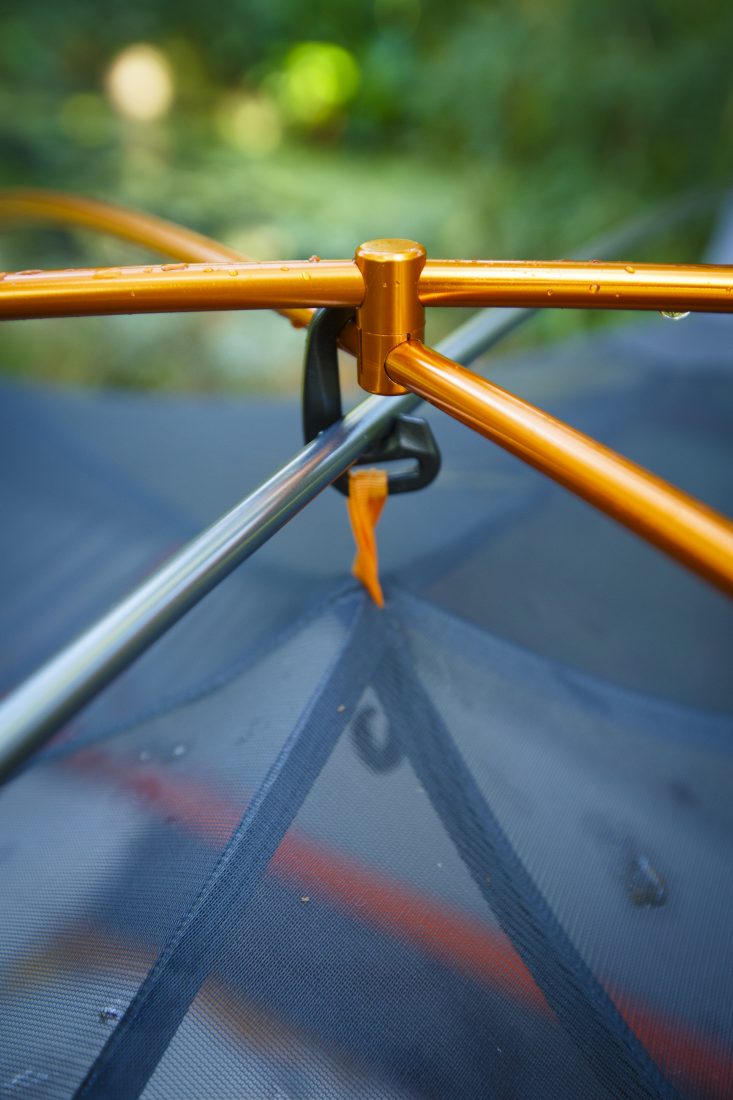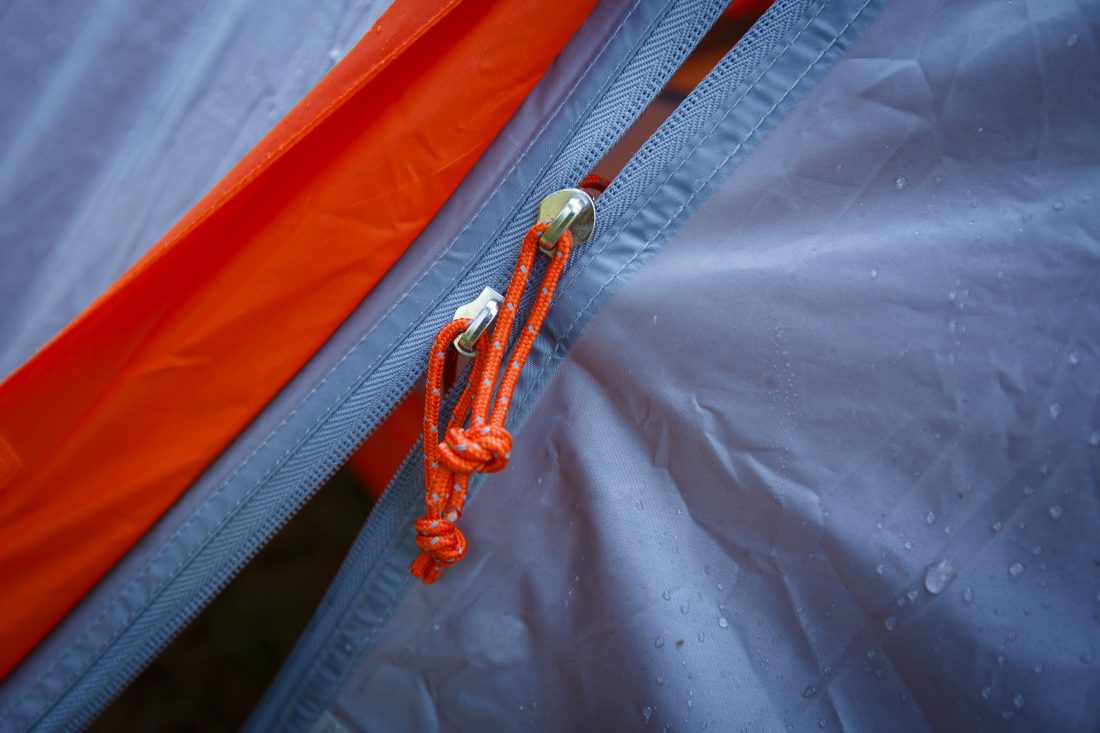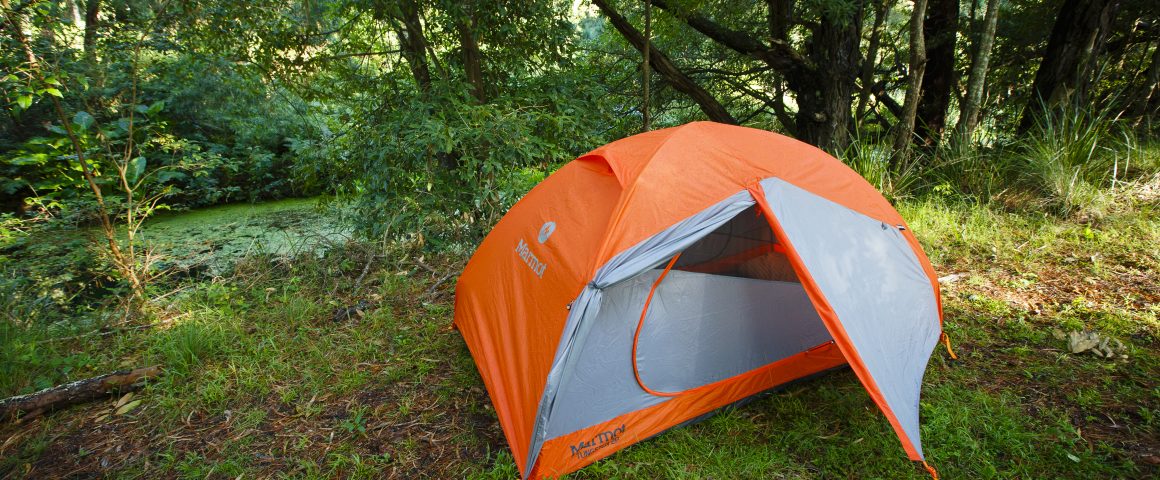By James McCormack
There are times when labelling a piece of gear as “beginner-friendly” is to essentially damn it with faint praise, to imply it’s not worthy of consideration by ‘serious’ outdoors folk. That’s why I’m almost hesitant to apply that label to Marmot’s Tungsten 2P tent, because it’s a solid 3-season tent suitable for experienced users. But it really is beginner-friendly, too, in that it addresses the key concerns most novices have about tents: that they’re too cramped; that they’re difficult to set up; that their interiors don’t breathe; and that they cost too much. The Tungsten 2P addresses all of these issues and then some.
Firstly, space: For a backpacking tent, the Tungsten has loads of it. It’s not so much the floor area (which at 3.0m2 is neither small nor palatial); it’s the volume. Curved poles allow for steep, near-vertical walls low down; this, in turn, creates an almost spacious interior. The tent corners are actually usable, there’s plenty of headroom when sleeping, and when sitting up (as long as you’re not a giant), you don’t have to be right in the tent’s centre to make it feel like you’re not about to scrape the ceiling. Any tent-bound storm days spent cooking, playing cards and/or drinking games are unlikely to give you the claustrophobia some tents induce. What’s- more, the two-door, two-vestibule design makes it feel like occupants don’t have to wrestle each other to either get at their gear or get out of the tent.
On the topic of entry and egress, the Tunsgten addresses something simple but nonetheless lacking in many tents’ vestibules: 2-way zips. It means you don’t have to always be pulling the zips away from you when you’re in the tent and closing the doors. It’s not a feature you’ll always use, because if the fly’s wet, you’ll get wet yourself squeezing through the flaps with the bottom zip engaged. But it’s nice to have the choice, especially when it’s dry. Meanwhile, entry and exit into and from the inner tent is without struggle; the D-shaped doors are huge.
Secondly, the tent is a cinch to erect quickly. My second attempt was effortlessly sub-five minutes. It’s not merely that it’s free-standing, or that the poles stay joint together so that you’re not fiddling with them; poles and webbing are colour-coded to make matching everything up a breeze.

Poles staying together easily 
Two-way zips
Thirdly, there’s breathability. Nearly the entire inner tent, with the exception of the head area, is no-see-um mesh; condensation build-up on the interior is basically impossible. It’s not just the walls that stay dry; we spent rainy nights in the tent and awoke each time to find a bone-dry floor. Sure, with the mesh, on windy nights if you get some wind flow coming up under the fly it could get a bit breezy inside. But that’s a trade-off I’d make every time in a 3-season tent. One added feature for ventilation is—replete with its own tiny, collapsible pole—the outer fly’s small air vent.
Of those four key concerns I mentioned earlier, lastly, there’s price. At $399, the Tungsten 2P isn’t absurdly dirt cheap, but for a quality tent of this standard, it’s not far from it. It’s definitely at the affordable end of the spectrum.
There are other features, too, that I’ll list in brief: the tent comes supplied with a footprint, gear pockets for organisation, and an interior central hanging hook. But there are a few trade-offs with Tungsten 2P, besides those I’ve already mentioned. Being triangular, the vestibules are only of moderate size. They’re not tiny, but definitely not huge, either; 80L packs would nearly fill them entirely. (Remember there are two vestibules though). The really big trade-off, however—and it’s not quite a gripe, but is definitely worth noting—is that the tent is a tad on the heavy side. Not massively so, but at 2.4kg without the footprint and 2.6kg with it, it’s definitely not light. But the simple fact is it’s unrealistic to expect a dual-doored tent with this much usable space and this level of affordability to be a featherweight. And if you do want it lighter, but are willing to pay more, there’s a 1.5kg ultralight version of Tungsten. But all in all, at this price, this is a great tent for beginners or more experienced alike.
Need to Know
Type: Freestanding dome
Capacity: 2-persons
Intended use: 3 season backpacking
Weight (as tested): 2280 grams [excl. 6 pegs (101g) + bag (48g)]
Weight (footprint): 174 grams
Weight (total): 2603 grams
Waterhead (fly): 1500mm
Waterhead (floor): 2000mm
Price: $399
Where to buy: Speciality retailers incl. Paddy Pallins, Wild Earth, and Tentworld
(This review first appeared in WILD #170)


